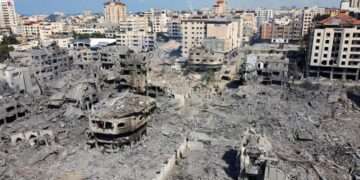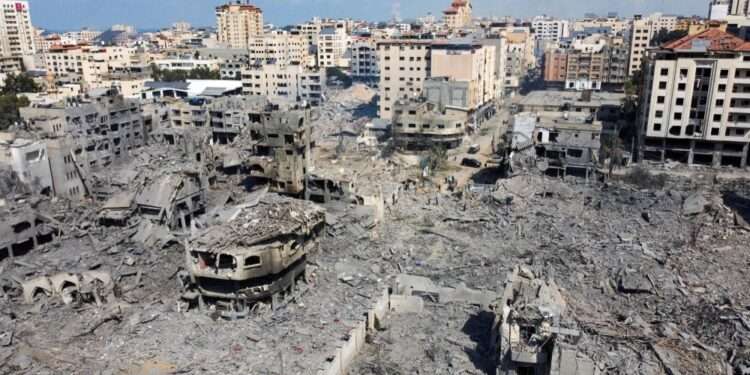The “Israel-Hamas conflict” is a complex and evolving geopolitical saga with October 7th standing out as a critical juncture. On this day, an unexpected display of strength from Hamas militants and a notable intelligence failure by Israel marked a significant shift in the conflict’s dynamics. This article delves into the origins, impacts, and the path forward, with a particular focus on the events of October 7th. We explore the historical context, the strategic miscalculations, and the surprising resilience demonstrated by Hamas. As we unpack these developments, we’ll provide a nuanced analysis of their implications on regional stability and the broader quest for peace. Through expert insights and detailed examination, this piece aims to offer a comprehensive understanding of the Israel-Hamas conflict, highlighting its complexities and the critical need for informed and proactive approaches.

Historical Context and Origins of the Conflict
Understanding the historical context and origins of the Israel-Hamas conflict is crucial for comprehending the deep-rooted animosity and recurring tensions that define this enduring struggle. The conflict’s genesis is intertwined with broader regional dynamics and historical events that have shaped the current landscape.
Early Tensions and the Formation of Hamas
The emergence of Hamas in the late 20th century was a pivotal moment in the Israel-Palestine conflict. Born out of escalating tensions and the vacuum of power left by other factions, Hamas quickly grew to become a significant militant and political force. The organization’s charter, calling for the establishment of an Islamic state in place of Israel, added a new layer of complexity to the conflict. Hamas is designated as a terrorist organization by several countries, including the United States and the European Union, due to its long history of attacks targeting Israeli civilians and security forces.
Key Milestones Leading Up to October 7th
In the lead-up to the crucial date of October 7th, several key milestones further exacerbated the Israel-Hamas conflict.
However, The period leading up to the recent escalations in the Israel-Palestine conflict was notably marked by a deceptive calm. Contrary to the common narrative, Hamas had been relatively silent, with no significant rocket launches reported. American President’s adviser Jake Sullivan even noted the unusual quiet in the Middle East. However, this surface tranquility belied the growing tensions at key flashpoints like the Al-Aqsa Mosque. Israeli forces’ entry into the sacred compound, their use of tear gas, and the shooting of unarmed Palestinians, including teenagers, ignited outrage. The deaths and raids in Palestinian homes, along with reports of killings and poisonings in the West Bank, further intensified the animosity.

Adding to the tensions, Israel’s Prime Minister made a controversial presentation at the United Nations, displaying a map that conspicuously omitted Palestine, symbolically erasing it from the region. This act, coupled with the Abraham Accords, which many felt marginalized the Palestinian cause, contributed to a sense of deepening exclusion and desperation among Palestinians. These events set the stage for a resurgence of conflict, challenging the notion of a quiet and peaceful Middle East and laying bare the deep-rooted and complex issues at the heart of this enduring struggle. Each event contributed to a mounting sense of urgency and an ever-tightening spiral of retaliation. The intelligence failure on October 7th, where Israeli forces were caught off guard by the strength and preparedness of Hamas militants, was a culmination of these growing tensions and miscalculations.
October 7th: A Turning Point in the Israel-Hamas Dynamics
The events of October 7th marked a significant turning point in the Israel-Hamas conflict, shedding light on the volatile nature of intelligence gathering and the unpredictable capabilities of militant groups. This day not only changed the tactical landscape but also altered the strategic calculus of both parties involved.
The Events of October 7th: What Happened?
On October 7th, Israel experienced one of its most notable intelligence failures, as its defense forces were taken aback by a well-coordinated and unexpectedly robust offensive from Hamas militants. This day was characterized by a series of attacks and defensive maneuvers that demonstrated Hamas’s growing tactical sophistication and its ability to surprise even the most seasoned military analysts. The failure to anticipate and effectively counter these moves led to a critical reassessment of both the intelligence apparatus and the strategies employed against Hamas.
Analyzing the Intelligence Failure and Hamas’ Unexpected Strength
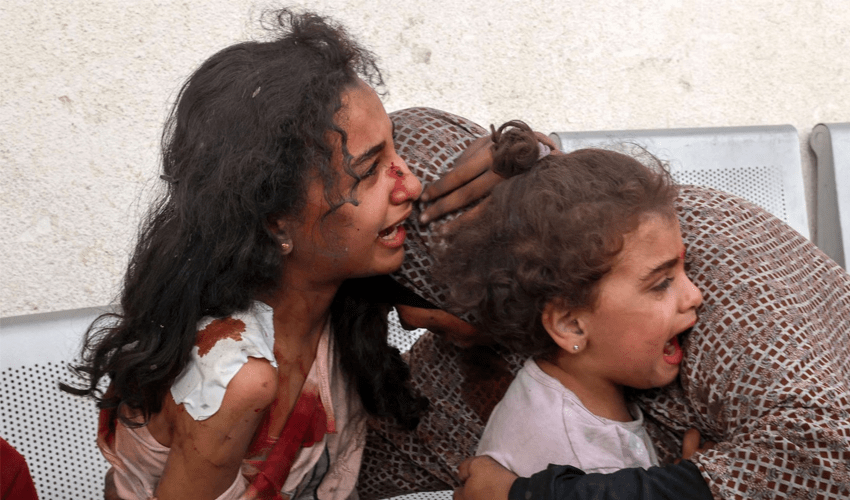
The intelligence failure of October 7th was not just a momentary lapse; it was indicative of broader challenges within the intelligence community’s understanding of Hamas’s capabilities and intentions. Analysts and military strategists were forced to confront the reality that their assessments of the group’s strength and tactics were outdated and underestimated. The repercussions of the Israeli intelligence miscalculation have had profound implications for its security policies and approach to Hamas. Experts note that the failure to detect Hamas’s financing and intent, overreliance on technology, and policy failures significantly contributed to the surprise attack. Israeli intelligence’s inability to predict the large, well-financed assault, despite visible transactions and years of planning, indicates a severe oversight and necessitates a reassessment of both intelligence collection and policy prioritization. This miscalculation underlines the need for a more nuanced understanding of Hamas’s capabilities and intent and a balanced reliance on both human and technical intelligence.
The Impact of the Conflict on Regional Stability
The Israel-Hamas conflict extends far beyond the immediate battlefield, affecting regional stability, international relations, and the daily lives of millions. Understanding these impacts is crucial for grasping the full scope of the conflict and the urgent need for a sustainable resolution.
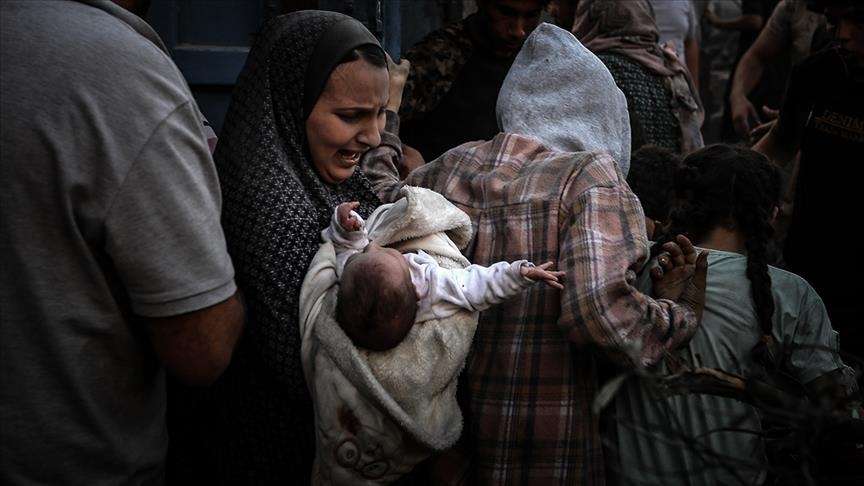
Humanitarian Consequences in Gaza and Israel
The humanitarian toll of the Israel-Hamas conflict is profound and far-reaching. In Gaza, frequent clashes and blockades have led to a dire humanitarian situation, with widespread poverty, destruction of infrastructure, and limited access to essential services like healthcare and clean water. Conversely, in Israel, the constant threat of rocket attacks from Gaza has led to loss of life, psychological trauma, and disruption of daily life.
The Broader Geopolitical Ramifications
The Israel-Hamas conflict doesn’t exist in isolation; it has significant ramifications for the broader Middle East and the international community. Regional alliances, international diplomacy, and global security are all influenced by the ebbs and flows of this conflict. The geopolitical implications of the Israel-Hamas conflict are profound, with significant impacts on regional relations, external powers’ roles, and the Arab-Israeli relationship, posing both challenges and opportunities for international peace efforts. The conflict has strained relations with Egypt and Jordan, impacting de-escalation efforts and regional stability. Efforts like the U.S.-led Israeli-Saudi normalization talks have been impacted, with the Palestinian question proving central to the region’s geopolitical dynamics. Concerns over regional violent disintegration have prompted actions from Saudi Arabia and the UAE, highlighting the widespread desire for stabilization. The conflict’s unpredictability challenges Israel’s military strategies and regional diplomatic relations, with wide-reaching calls for humanitarian relief and accountability.
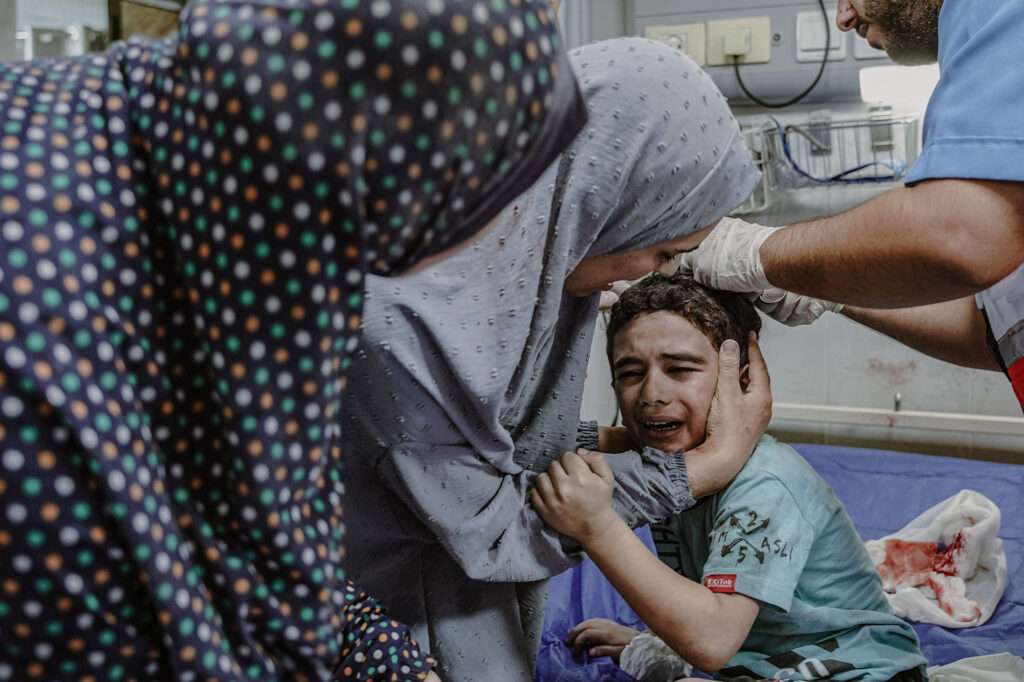
International Responses and Diplomatic Efforts
The international community has played a complex role in the Israel-Hamas conflict, with various states and organizations attempting to mediate, influence, or otherwise engage with the situation. Let us examine the spectrum of international responses and the effectiveness of diplomatic efforts to date.
Global Reactions to the Israel-Hamas Conflict
Countries around the world have reacted to the Israel-Hamas conflict in diverse ways, reflecting their own interests, alliances, and perspectives on the region. Some have taken a more active role in mediation, while others have provided military or humanitarian support.
Efforts Towards Peace: Successes and Failures
Despite numerous attempts at brokering peace between Israel and Hamas, lasting stability has remained elusive. Let us examine the factors that have contributed to their success or failure, including the role of mediators, the willingness of parties to negotiate, and the influence of external pressures. Additionally, it will discuss the challenges of implementing and maintaining agreements in such a volatile context.
Future Prospects and Pathways to Peace
As the Israel-Hamas conflict continues to evolve, understanding the potential future scenarios and the conditions necessary for peace is crucial. Let us analyze the current trajectory of the conflict and explore the various factors that could influence its resolution.
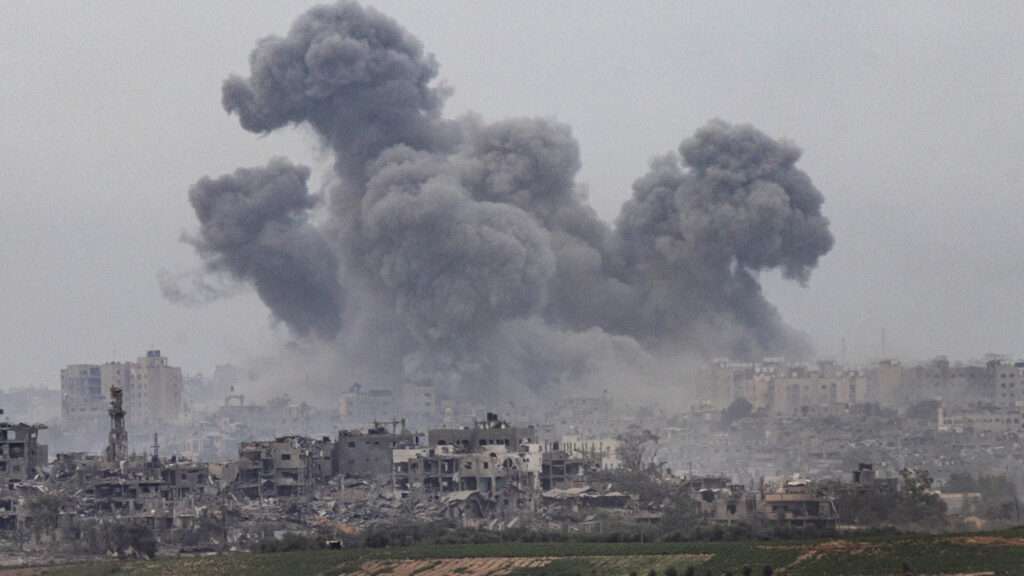
Challenges and Opportunities in Resolving the Conflict
Resolving the Israel-Hamas conflict is fraught with challenges, including deep-seated mistrust, ideological differences, and the complex socio-political landscape of the region. However, there are also opportunities for peace that arise from changes in regional dynamics, international pressure, and shifts in public opinion. Let’s discuss these challenges and opportunities, examining what it would take to move towards a sustainable peace.
Potential Solutions and the Role of the International Community
Various potential solutions have been proposed to address the Israel-Hamas conflict, ranging from two-state solutions to long-term ceasefires and economic initiatives. The effectiveness of these solutions often hinges on the involvement and support of the international community. Let’s discuss how the international community can play a constructive role in facilitating dialogue, supporting reconstruction efforts, and ensuring any agreements are upheld.
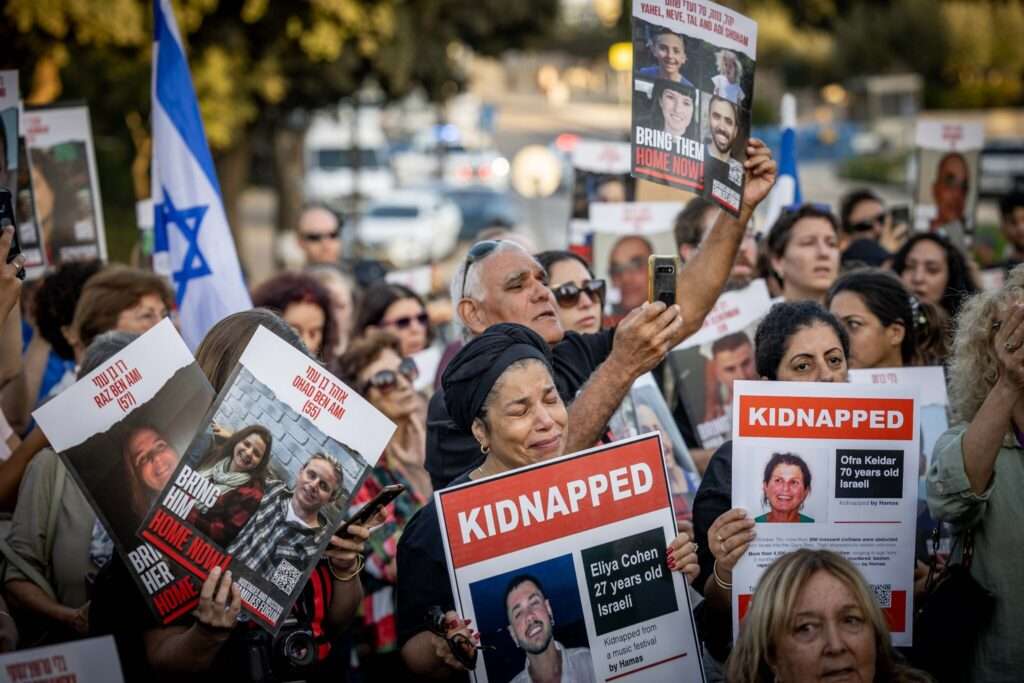
Conclusion: Reflecting on the Path Forward
As we reflect on the intricate tapestry of the Israel-Hamas conflict, it’s clear that this is not just a regional issue but a complex phenomenon with global implications. The historical roots, the pivotal events like those on October 7th, and the ongoing struggle for peace shape not only the lives of those directly involved but also the broader international landscape.
The humanitarian impact in Gaza and Israel, the geopolitical ramifications, and the varied international responses underline the multifaceted nature of the conflict. It’s a situation that demands attention and compassion from the global community, calling for an informed and nuanced approach to understanding and ultimately resolving the hostilities.
The challenges ahead are significant, with deep-seated mistrust and ideological divides posing substantial obstacles to peace. However, within these challenges lie opportunities for change. Shifts in regional dynamics, international diplomacy, and grassroots movements for peace provide glimmers of hope in what often seems like an intractable situation.
As readers and global citizens, our role in fostering dialogue and understanding cannot be understated. By staying informed, advocating for peace, and supporting efforts that aim to address the root causes of the conflict, we contribute to a world that values human dignity and seeks sustainable solutions.

The Israel-Hamas conflict is a reminder of the complexities of modern geopolitical struggles and the enduring need for perseverance, empathy, and innovative thinking in the pursuit of peace. As we close this discussion, let’s carry forward the desire to see a future where dialogue triumphs over division, and peace is a reality, not just an aspiration.
In case you want to delve deeper into this conflict, Check these articles:
- Navigating the War on Gaza – War Prevention Initiative
- A Collection of Narratives on the Israel-Hamas War – The Atlantic
- St. Joe’s community members discuss Israel-Hamas conflict – The Hawk Newspaper
- In Israel-Hamas War, Truth and Fiction Is Hard to Discern on Social Media – The New York Times
- Opinion | Israel Is In Real Danger For Three Reasons – The New York Times
- Three Sides to a Conflict: The Unspoken Truth in the Hamas-Israel Conflict
- Israel-Hamas war updates: ‘Long and difficult’ fight as Israel pummels Gaza | Israel-Palestine conflict News | Al Jazeera
For more of our articles, please have a look on our best blog posts listed below:





